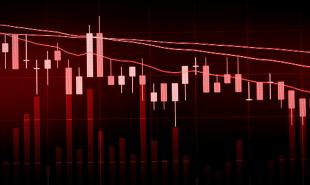
The Moving Average Convergence Divergence (MACD) indicator has the past several years become one of the more popular computer-generated technical indicators.
The MACD, developed by Gerald Appel, is both a trend follower and a market momentum indicator (an oscillator). The MACD is the difference between a fast exponential moving average and a slow exponential moving average. An exponential moving average is a weighted moving average that usually assigns a greater weight to more recent price action.
The name “Moving Average Convergence Divergence” originated from the fact that the fast exponential moving average is continually converging toward or diverging away from the slow exponential moving average. A third, dotted exponential moving average of the MACD (the "trigger" or the signal line) is then plotted on top of the MACD.
Parameters:
Mov1: The time period for the first exponential moving average. The default value is usually 12, referring to 12 bars of whatever timeframe plotted on the chart. (This is the fast moving average.)
Mov2: The time period for the subtracted exponential moving average. The default value is usually 26, referring to 26 bars. (This is the slow moving average.)
Trigger: The period of 9 bars for the signal line representing an additional exponential moving average.
The MACD study can be interpreted like any other trend-following analysis: One line crossing another indicates either a buy or sell signal. When the MACD line (blue in in the chart example above) crosses above the signal line (red line), an uptrend may be starting, suggesting a buy. Conversely, the crossing below the signal line may indicate a downtrend and a sell signal. The crossover signals are more reliable when applied to weekly charts, though this indicator may be applied to daily charts for short-term trading.
The MACD can signal overbought and oversold trends, if analyzed as an oscillator that fluctuates above and below a zero line. The market is oversold (buy signal) when both lines are below zero, and it is overbought (sell signal) when the two lines are above the zero line.
The MACD can also help identify divergences between the indicator and price activity, which may signal trend reversals or trend losing momentum. A bearish divergence occurs when the MACD is making new lows while prices fail to reach new lows. This can be an early signal of a downtrend losing momentum. A bullish divergence occurs when the MACD is making new highs while prices fail to reach new highs. Both of these signals are most serious when they occur at relatively overbought/oversold levels. Weekly charts are more reliable than daily for divergence analysis with the MACD indicator.
For more details on the MACD, Appel has a book in print, entitled: "The Moving Average Convergence-Divergence Trading Method."
As with most other computer-generated technical indicators, the MACD is a "secondary" indicator in my trading toolbox. It is not as important as my "primary" technical indicators, such as trend lines, chart gaps, chart patterns and fundamental analysis. I use the MACD to help me confirm signals that my primary indicators may be sending.
That's it for now. Next time, we'll examine another important topic on your road to increased trading success.
Read more by Jim Wyckoff







